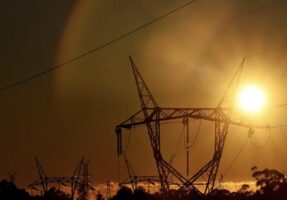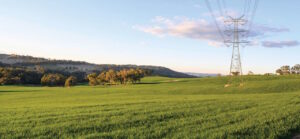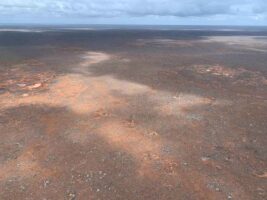A wind farm zone south of Sydney will be two-thirds of its original proposed size and further off the coast to protect little penguins, rocky reefs and the southern right whale.
Climate Change and Energy Minister Chris Bowen confirmed the zone stretching along the NSW Illawarra coast on Saturday, officially declaring it the fourth in Australia.
The government said the offshore wind farm zone would be 1022 sq km – reduced by a third from its original plan – and 20km, rather than an initially proposed 10km off the coast.
It would exclude significant environmental areas including a biologically important area for the little penguin, the shelf rocky reef key ecological feature, and the southern right whale migration and reproduction area.
The project would be able to power 1.8 million homes with up to 2.9 gigawatts of energy, rather than a previously proposed 4.2 gigawatts.
“The Illawarra has been an engine room of the Australian economy for generations, and now it’s ready to power Australia’s clean energy future,” Mr Bowen said.
“Declaring this offshore wind zone brings the Illawarra a step closer to becoming a major provider of the building blocks of the net zero transformation – green power, green hydrogen and green steel – along with thousands of new jobs.”
The zone’s size reduction followed extensive community consultation with local leaders, industry, unions, First Nations people, community groups and individuals, the government said.
Plans for the offshore wind zone have come under fire from environmental activists, who said the project threatened whales.
Member for Cunningham Alison Byrnes said amending the zone to make it 20km from the coast was a “sensible compromise” reflecting the majority of the community’s opinion.
An extensive process of studies and approvals would follow the zone’s declaration, she said.
The zone was expected to create 1740 jobs during construction and 870 ongoing roles.
“My expectation is that all proponents not only make sure that their projects meet the highest environmental standards but also incorporate local content, including the use of locally produced steel, and local workforce and develop a strong benefit sharing scheme so that our community meaningfully benefits from hosting an offshore wind farm should one be developed,” Ms Byrnes said.
Feasibility licence applications for offshore wind projects in the Illawarra zone would close on August 13, the government said.
Climate Council policy and advocacy head Jennifer Rayner said the Illawarra – long a manufacturing powerhouse – would continue to thrive for generations with affordable and clean energy being produced in the region.
“Offshore wind will be an important part of Australia’s clean energy grid because it provides reliable, steady renewable energy right around the clock,” Dr Rayner said.
“The federal and state governments need to work together to rapidly break through roadblocks that are holding back the delivery of onshore wind projects already supported by communities and investors.”
University of Wollongong Energy Futures Network director Ty Christopher hailed the offshore wind project as a positive step for the region.
“By working together as a community, sharing our concerns for the environment to co-design a clean energy future for the region, we have the ability to deliver positive outcomes for our oceans, our communities and our local economy,” he said.
The states are locked in a race for “first wind”, with Mr Bowen in March declaring a finalised offshore wind farm zone near western Victoria – one of six areas earmarked for projects around Australia’s coast.
The Southern Ocean zone, located 15km to 20km off Victoria’s coast near industrial Portland, was also downsized to 1030 sq km – one-fifth of its initially drafted size – to give the right of way to whales.
Closure dates are in place for all of Victoria’s coal-fired power stations, including one of Australia’s biggest – Yallourn in Latrobe Valley – in 2028.
AAP










